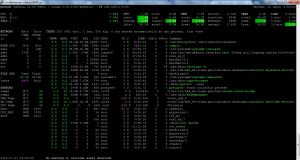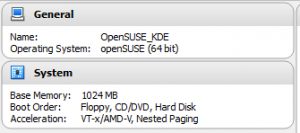One of the slightly irritating parts of the build of a VirtualBox VM using the PUM downloads is the fact that the build script copies the DPK files into the VM prior to unpacking them. The data is stored under /opt/oracle/psft/dpk which is a mount point for “disk2”. Typically this disk expands to 23GB+ during the build process as a result of this approach.
To reduce the size of the VMs, what I like to do after the VM has been built is to:
- Attach the disk2, disk3 and disk 4 .vmdk’s to a simple Linux server VM – I use a minimal Fedora 24 install but it doesn’t really matter just so long as the zerofree utility is installed. Note: You could install zerofree into the PeopleSoft VM and do this step using Oracle Linux, but I use a smaller Linux install as it boots quicker.
- Boot the VM and mount the three disks read/write
- Delete any large files I no longer need e.g. the DPK tgz/zip files, PeopleTools 8.53/8.54 client folders, ptengs.db
- Re-mount the disks read only (mount -o remount,ro /dev/sd[bcd]1 {mount-point} )
- Run zerofree -v /dev/sd[bcd]1 on each disk to zero the empty space created by the file deletions.
I then close down the VM, detach the .vmdk files and clone the .vmdk disk files to .vdi files using virtual media manager. This has the effect of shrinking the resulting files – essentially doing a “VBoxManage modifyhd {vdi_file} –compact“.
Once I have the .vdi versions of the files, I remove the .vmdk files from the PeopleSoft VM, add back the .vdi files, boot the PeopleSoft VM, test it and delete the original .vmdk files if everything works.
In general, this approach releases approximately 27 Gb per VM – making the resulting VMs around 30-36 Gb. Still absurdly big of course 🙂

